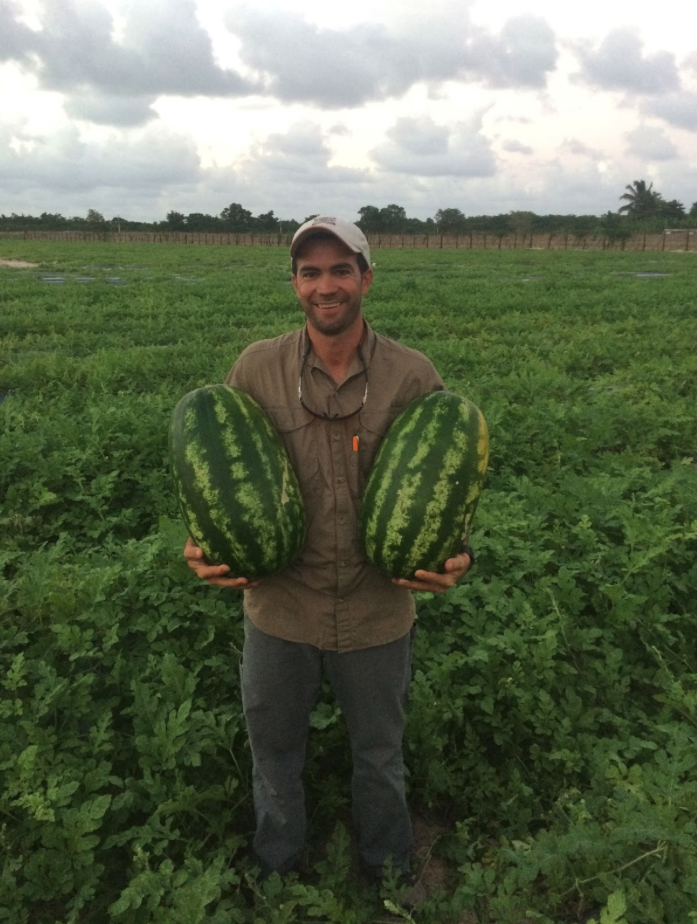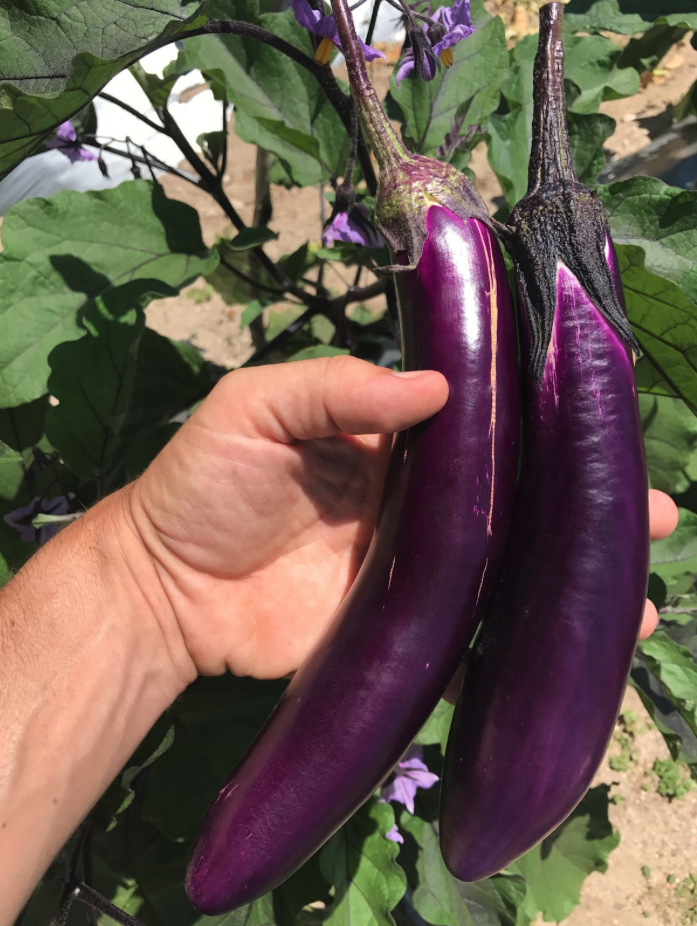A regenerative consultant looks back on three case studies from his conventional past and what he could have done differently
My career in agronomy has had some extreme changes over the past 20 years. There were changes in the growing environments (four different countries), changes in crop types (turf grass, fruit and vegetables, commodity row crops) and changes in positions (golf course superintendent, grower, consultant).
But the most recent change — from conventional to regenerative agronomy — has been the most profound. My mindset has evolved from applying soluble fertilizer to fix every deficiency to looking at the underlying factors causing the deficiency. I’ve gone from only treating pest symptoms with chemical band-aids to addressing the cause of the pest’s presence in the first place.
For many years I grew fruit and vegetable crops in Latin America. There were several advantages to growing in the tropics: 365 days above 75°F, day length never dipping below 12 hours, and affordable labor (300+ laborers for 150 acres of hand-planted, trellised, harvested and packed crops). However, there were also several disadvantages, including never having a pest-killing frost, no rainfall for multiple consecutive months, and 100+°F in February!
I would like to detail a few of the agronomic issues we faced there. I’ll tell you how we dealt with them on the farm with the conventional knowledge I had then, and what I would have done differently with the regenerative knowledge I have now.
Blossom End Rot Watermelons –> Biology and Boron

Watermelons were the first crop that we grew on the farm I developed in the Dominican Republic. These were large-seeded (diploid) melons, as opposed to the medium-sized seedless (triploid) fruits most commonly grown in the U.S.
Whether it was a good idea or a bad one, in order to be as close as possible to our point of sale, we grew them on a farm with far less than optimal conditions. Along with having a thin topsoil layer, the soil was calcareous, with 85-90 percent base saturation calcium and a pH of 8.5. We applied several preplant soil amendments, including common products like gypsum and KMag, along with less common materials such as composted seaweed from the nearby beach and guano from a local cave. The 45 acres were fertigated using several sulfur-based fertilizers to drive down pH and increase mineral availability.
Initial crop establishment was good, as was flowering and fruit set. However, as we got further into filling those large melons, we started to see blossom end rot, a physiological disorder caused by a calcium deficiency. We tried many tactics that we thought would increase plant levels of calcium, including fertigating high rates of calcium nitrate and liquified gypsum. That made slight improvements, but we were never able to completely overcome the disease.
This was a major problem that left up to half of the melons nonsalable and also left us with a huge conundrum. How could plants grown on this calcareous of soil have a serious calcium deficiency? We were aware that not all of the calcium in the soil was plant available, but we were not aware of what other components (apart from soluble calcium and sulfur application) were missing to increase that availability.
Fast forward a decade and I now realize what two of the main missing components were. Most importantly, increasing biological activity better enables the rhizophagy process and increases mineralization, especially for minerals demanded in high volumes like calcium. The oxidized soil we were working with was not very hospitable to microbial activity in the first place, but to aggravate matters, we pumped heavy rates of high-salt (oxidizing) fertilizers on it to force-feed the plants.
We also used plastic mulch for weed control and moisture retention but did not realize the negative effect it has on gas exchange. Just like any organism, if bacteria can’t breathe properly, their survival is compromised. To work within our system but improve this microbial life, we should have focused on preplant materials with higher rates of organic matter, such as compost, fertigated with inoculants and support, or even compost tea. The standard plastic mulch could have been replaced with a semi-permeable one, or potentially heavy organic mulch.
The other missing component is related to soil chemistry. Boron levels in a plant are directly related to calcium mobility. Boron helps carry the calcium into all plant parts, and one of its main functions is to build cell walls. If either function is lacking, calcium will not arrive where it is needed — hence, watermelon rinds that are weak due to low cell wall strength. We were not supplementing much boron at all, but we should have been, considering the high calcium concentration in the soil, high levels of precipitation, and low organic matter. These conditions produced a low anion exchange capacity that increases leaching.
White Fly Peppers –> Non-Nitrate Nitrogen and Mo-Mg-S-B

A number of years later, I moved to Mexico and started a farm where we specialized in growing Asian vegetables for export to Canada and Europe. Spicy peppers were a major crop for us, but our peppers had a big problem with white flies. In our area of the Yucatan Peninsula, two of the main crops grown were tomatoes and habanero peppers. These were all in open fields and followed basically the same planting schedules, since wet weather prohibited growing from June through October.
When we started planting, we kept the same schedule as other growers, and within a month after transplanting our peppers, we started to see tremendous white fly pressure. Their feeding was not as much of a concern as the fact that they are vectors for viruses that are lethal to the entire crop. Although we followed a strict schedule of frequent insecticide applications with alternating modes of action, we were not keeping up with the fly populations. We quickly started to see plants with viral symptoms, and the only cure was to remove them to decrease the spread. We were then recommended, by agronomists and other growers in the area, to install row cover while the crop was getting established. We did so on extensive acreage with very beneficial effects. Although the expense of materials and installation was extreme, we continued with this practice, as we knew of no alternatives.
Once again, fast forward many years and I’ve realized what would have been not just an alternative treatment, but most likely a cure. Nitrate in plant sap is the primary food source for white flies. About 75 percent of the total nitrogen we applied to those crops was in the nitrate form — we used tremendous amounts of calcium nitrate and potassium nitrate in particular. If we had adjusted our nitrogen applications to include more in the form of ammonium, urea and amino acids, that surely would have made a big dent in eliminating the white flies’ food source.
To add fuel to the fire, I never knew of molybdenum’s responsibility in the conversion process of nitrate to proteins (it’s an enzyme cofactor for nitrate reductase). Magnesium, sulfur and boron are also involved in this protein synthesis process. If we had incorporated these minerals into foliar applications and gotten plant sap levels into sufficient ranges, we could have drastically reduced the need for insecticide, eventually eliminating it altogether.
Eggplant in Thrips –> Mo-Mg-S-B
Eggplant was another major crop on our farm in Mexico — Chinese eggplant, to be precise, which is long and slender with extremely sensitive skin. Any rubbing of the fruit — on branches, support stakes, etc. — would easily scratch it and turn it into a cull. Our problem with this crop was that thrips would mark the fruit to the point where it was not marketable.

Source: Courtesy of Cory St. Clair
As we did for all pest problems, we made routine applications of different classes of insecticides and used different types of sprayers in order to penetrate all angles of the foliage. We also utilized beneficial bacteria for control. These practices gave intermittent results, but we were still left with a high percentage of the crop not being sellable.
One thing stands out when I look back on this situation: the thrip pressure was the worst during the hottest and driest months. Although we had two separate pump stations with a fairly high-capacity irrigation system, it was all we could do to keep the plants from becoming dehydrated and heat stressed during those months. Also, on the self-inflicted level, the high-salt-index soluble fertilizers did not aid the situation.
Today I know that these factors — temperature and dehydration — combine to turn off photosynthesis in plants and turn on photorespiration. The photorespiration process releases ammonia as a byproduct, along with CO2. This ammonia builds in plant sap and is the primary food source for thrips.
In order to process this ammonia into amino acid, four main minerals (Mo, Mg, S, B) are necessary, as stated above. If we had monitored plant sap and supplemented these four minerals when needed, we once again could have saved ourselves a tremendous amount of money and energy, along with big numbers of fruit at harvest.
These are just a few ways I’ve realized how limited my past knowledge base was, and how those limitations informed the actions I took and mistakes I made.
I am most definitely not saying that I could have quickly and easily fixed all of the deficiencies and pest issues we had. But I can say with confidence that I now operate with an approach that is effective and efficient. It is an approach that uses the mechanisms by which plants are properly nourished — an approach that realizes there is a root cause behind every crop pest and that addressing that root cause is the most logical way to resolve crop issues. This is regenerative agronomy.
Cory St. Clair is a consultant with Advancing Eco Agriculture.















